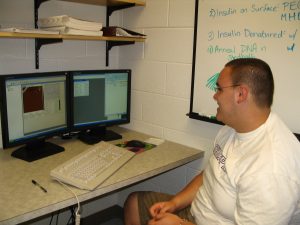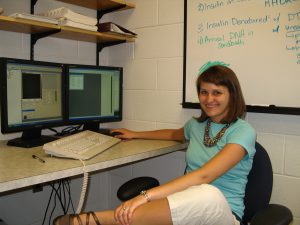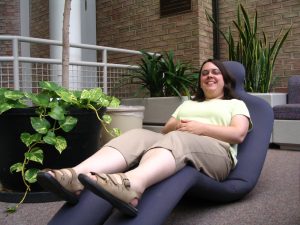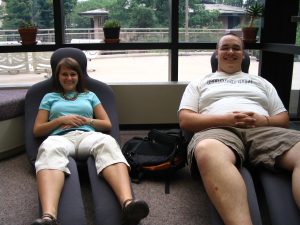On Friday, June 26, Jenny Hampton and her students traveled to Calvin College to use the Atomic Force Microscope (AFM) in Kumar Sinnah‘s lab in the Chemistry Department there.
Nick Wozniak and Alyssa Frey both took turns at the controls of the AFM.
The purpose of the trip was to look at the surface structure of several electrodeposited thin films. We looked at both nickel-iron alloy samples and copper samples.
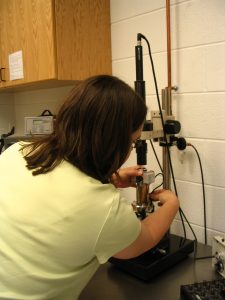 In order to swap the samples, first, the AFM head must be removed. This is the most delicate part of the instrument, containing the AFM cantilever (or “tip”), the laser, and the photodetector. Here Jenny Hampton disconnects the electronic connection between the head and the scanner before removing the head.
In order to swap the samples, first, the AFM head must be removed. This is the most delicate part of the instrument, containing the AFM cantilever (or “tip”), the laser, and the photodetector. Here Jenny Hampton disconnects the electronic connection between the head and the scanner before removing the head.
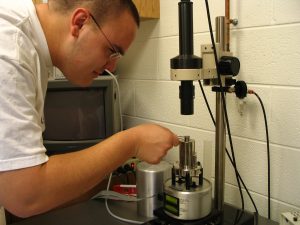 Next, the sample is attached to a metal disk, which is held onto the scanner by a magnet. Here Nick places one of the samples on the scanner.
Next, the sample is attached to a metal disk, which is held onto the scanner by a magnet. Here Nick places one of the samples on the scanner.
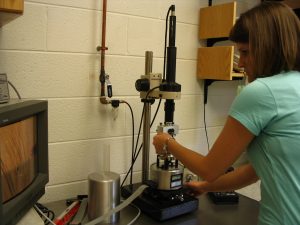 After the AFM head is replaced, the tip can be positioned on the sample to image a particular area. Here Alyssa moves the tip from one location to another with the help of the live image feed from the optical microscope.
After the AFM head is replaced, the tip can be positioned on the sample to image a particular area. Here Alyssa moves the tip from one location to another with the help of the live image feed from the optical microscope.
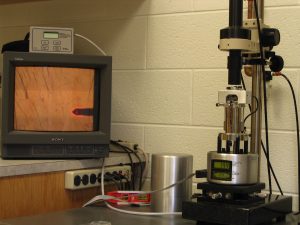 The AFM in Kumar Sinnah’s lab is optimized for measuring small forces. Dr. Sinnah uses the AFM to investigate interactions (such as binding or recognition) between biological molecules. However, atomic force microscopy was originally developed to image the nano- and micro-scale structure of surfaces, which is what we measured.
The AFM in Kumar Sinnah’s lab is optimized for measuring small forces. Dr. Sinnah uses the AFM to investigate interactions (such as binding or recognition) between biological molecules. However, atomic force microscopy was originally developed to image the nano- and micro-scale structure of surfaces, which is what we measured.
The trip was a success. Before we headed back to Holland in the late afternoon, we took a moment to try the ergonomically designed chairs in the lobby of the Science Complex.


